Lebanon distinguishes itself in the Middle East – a state too weak to stop arms trafficking, but not so weak as to descend into chaos. Both sides of the Syrian Civil War capitalized on this and, as the predilection extends into the war in Yemen, Israel and the U.S. are pressuring the U.N. to act.
Lebanon has a lot riding on the 73rd U.N. General Assembly. The state is pushing for assistance in coping with the 1 million refugees from the Syrian Civil War and favorable treatment by the UN peacekeeping operation in Lebanon. Meanwhile, geostrategic threats buffet the country from all sides — Syria’s unpredictable future plus Israel and Saudi Arabia intent on destroying Iran-backed Hezbollah.
“Only lots of force and blood could send Iran home,” said former Israeli National Security Council chief Major- General Yaakov Amidror, making a proposal for driving Iran out of Lebanon, in a public debate on September 3rd. In the debate, the former heads of assorted military and intelligence branches only quibbled over whether a limited war against Hezbollah would work, or if a general war against all of Lebanon would be necessary.
President Trump, who addressed the General Assembly today, railed against Iran stating that Iran’s leaders sow chaos, death, and destruction. “They do not respect their neighbors or borders, or the sovereign rights of nations. Instead, Iran’s leaders plunder the nation’s resources to enrich themselves and to spread mayhem across the Middle East and far beyond.” Trump added, “Iran’s neighbors have paid a heavy toll for the [regime’s] agenda of aggression and expansion.”
For its part, the Lebanese government seems to be doing what it can to earn the goodwill of the U.N. As the 73rd session opened, the Lebanese Parliament approved the 2014 international Arms Trade Treaty. Hezbollah legislators were outraged by the implications of the law for Hezbollah’s ability to project power, prompting one, Ali Ammar, to walk out of the parliament, saying the treaty “infringes on the weapons of the resistance.”

Instability has driven investment away from the country. Remittances from Lebanese citizens working in Gulf States, which comprise 20% of Lebanon GDP, have worsened in recent years. As a result, the government’s debt-to-GDP ratio is 150% and projected to rise to 180% by 2023.
“We have approximately 30,000 to 35,000 young people who graduate from university every year and only 5,000 jobs are offered annually, which leaves some 30,000 without jobs,” Lebanese Labour Minister Mohammad Kabbara said.
Yet, as the rest of the country sinks in desperation, one industry is booming — the arms trade.
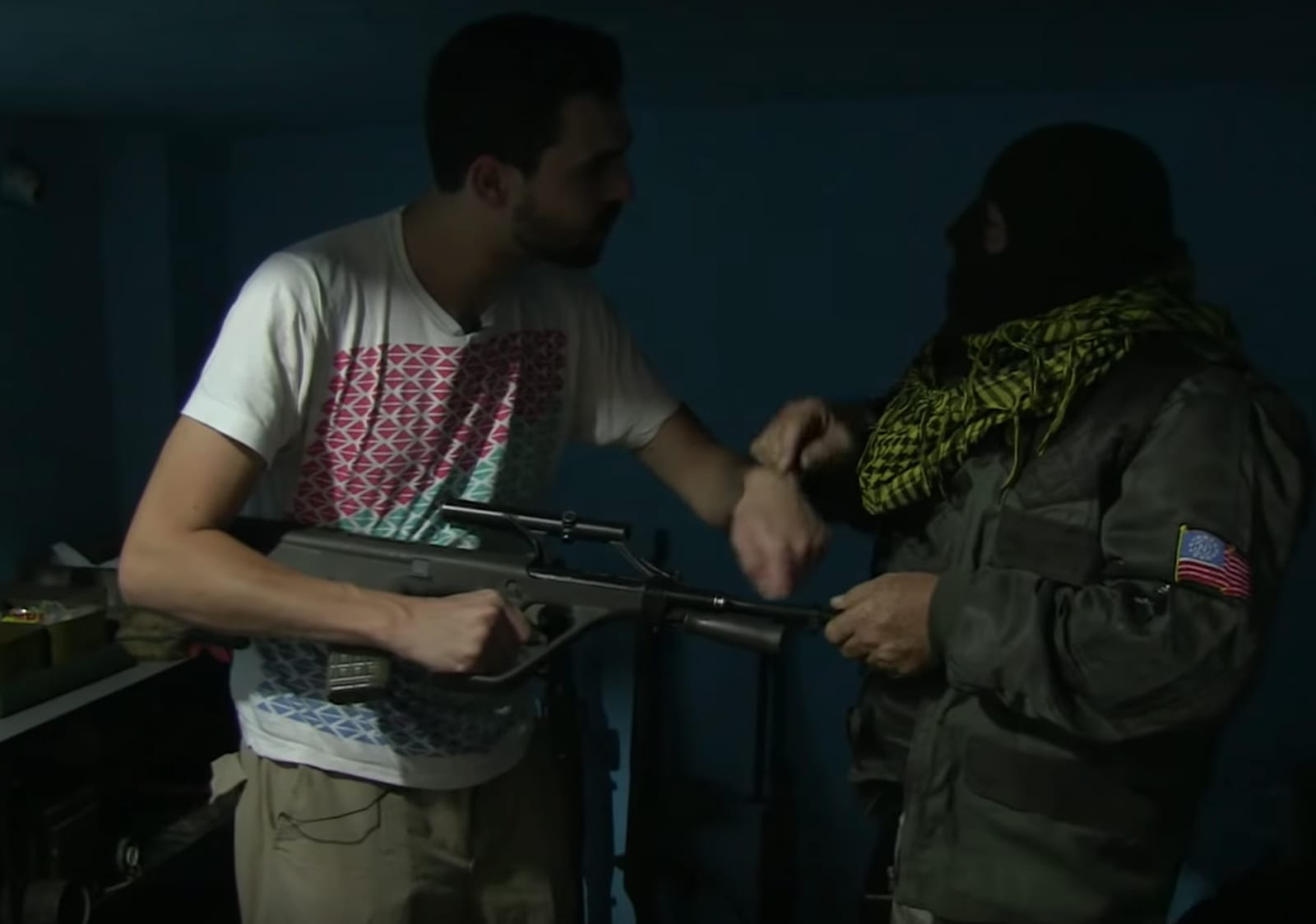
Exporter
In May of 2011, just a month after peaceful demonstrations began in Syria, arms dealers in Lebanon reported 20-40% increases in prices for their wares; indicating that before the Syrian conflict escalated into outright civil war, the arms trade exploded in Lebanon.
Although Lebanon has limited native arms manufacturing, it was awash in weaponry. The 1975-1990 Lebanese Civil War primed this predilection because foreign powers — then largely Syria, the United States, Israel and Iran — continuously funneled weapons to their preferred faction within the small country. Most were small arms (rifles, grenade launchers, etc.) that were easy to smuggle and impossible to retrieve in arms control agreements after the war.
These weapons were ideal for the Syrian rebels, and Lebanon, given its lightly guarded borders and proximity to Syria’s major population centers, made an ideal conduit.
“There is an arms selling frenzy, and it’s all going to Syria. All of it,” arms dealer Abu Rida told a reporter in May 2011. Later in the conversation with the reporter, three young men burst into Mr. Rida’s store (one of them with a bullet wound) seeking ammunition to continue their street fighting. Mr. Rida wouldn’t sell to the young men, because the only ammunition that he had in stock, which was compatible with their weapons, dated from 1958.
“I don’t want to sell them to you because the rounds may not fire,” he said.

While the civil war in Syria was still heating up, the Libyan Civil War came to a close and spewed a glut of weapons across the Middle East and North Africa. By May of 2012, the U.N. reported that Syrian rebels were using weapons from Libya. Some were intercepted in raids on container ships on their way to Tripoli, Lebanon.
Significant circumstantial evidence, along with anonymous sources speaking to the press, indicates that the CIA partnered with Turkey to transfer these weapons. This reporting was conducted in the context of the Benghazi scandal, where CIA staff outnumbered US State Department officials present the night of the attack.
The period of arms transfers through Tripoli, Lebanon coincided with a period of intercommunal violence there. Alawite Christians, sympathetic with the Assad regime, and Sunni Muslims, sympathetic to the largely Sunni anti-Assad rebels, fought it out in the city streets.
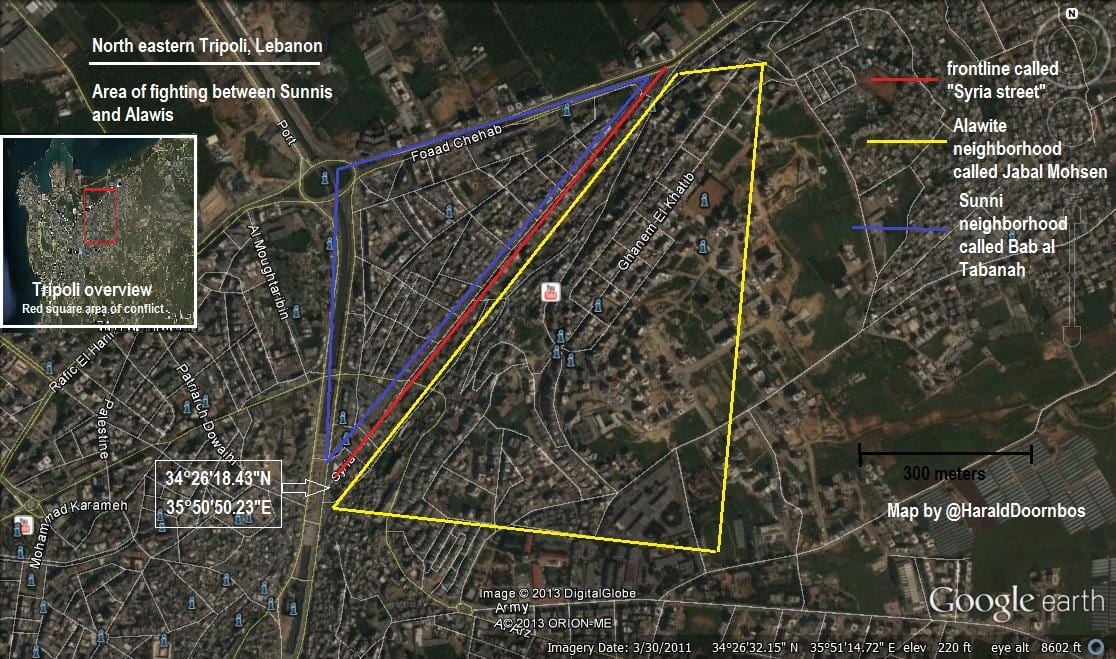
Importer
Lebanese arms dealers’ fat times were not to last. Domestic street fighting gave way to a far more deadly spate of car bombings, and soon dealers faced competition. In May of 2013, the Russians started supplying the Syrian government with weapons.

Over the Summer of 2012, Hezbollah intervened in the war to support the Assad regime in their fight against the (Sunni majority) Free Syrian Army. Once Hezbollah entered the war, they started to gain access to the Russian weaponry, specifically small arms such as the GP-30 40mm grenade launcher.
“They [Hezbollah fighters] are not supposed to bring back weapons from Syria, but some do, either for personal use or to sell to dealers,” said Ahmad, an arms dealer in south Lebanon (Hezbollah and the Shia Muslims are concentrated in the south).
The bottom of the arms market promptly fell out.
“No one is sending weapons across the border to Syria anymore because there is no demand,” says Abu Rida, an arms dealer in Beirut (unknown if it is the same Mr. Rida). In this 2014 interview, this Mr. Rida explained that the glut of foreign weapons in Syria had even reversed the flow of weapons back into Lebanon. “It’s all coming here now.”
Things took an even uglier turn in Tripoli.
ISIS’s sudden battlefield victories during and after the summer of 2013 overshadowed the polyglot resistance to Assad. There was growing anger at the Lebanese on the part of the Sunnis in Tripoli. To the Sunnis the Lebanese government appeared to be looking the other way as Hezbollah intervened to support Assad in crushing Syrian Sunnis.
By October 2014, the attacks had turned from targeting the Alawites to attacking the Lebanese soldiers.

Following the emergence of ISIS, importation of weapons into Lebanon for use by anti-Assad forces dried up. Furthermore, Iranian and Russian arms transfers to the Syrian Civil War were taken directly to the Damascus airport. Arms continued to flow into Lebanon through Hezbollah fighters as the organization capitalized on the arms flows to stock up weaponry.
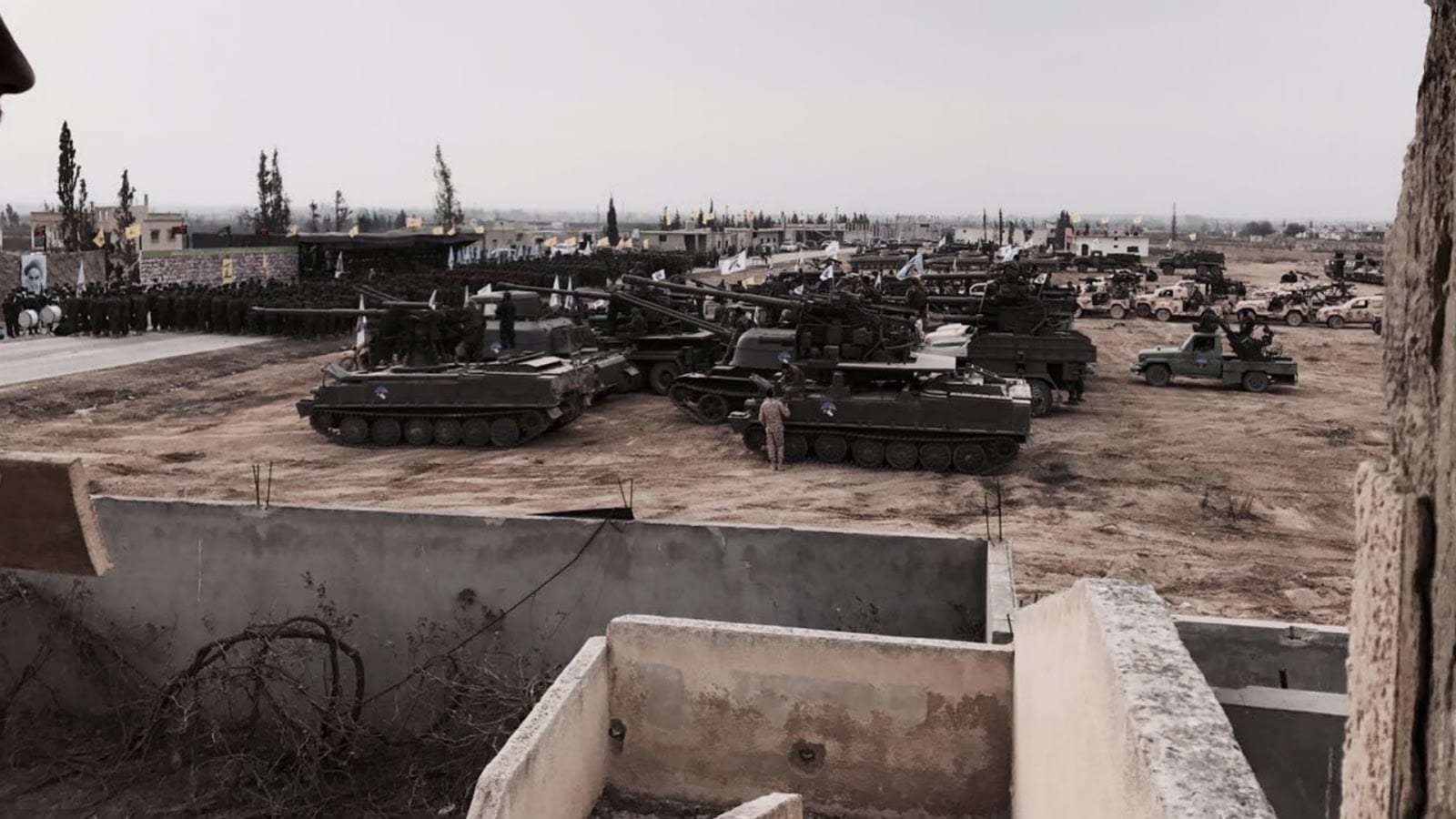
The other major source of arms imports into Lebanon was western countries. Investment in the Lebanese Army started in 2006, after a war between Lebanon and Israel. The war was fought to a stalemate, with Hezbollah taking credit for holding off the Israelis. The aid to the army was meant to ensure that Hezbollah wasn’t the sole force with military credibility in the country. The U.S. government invested until 2017.
In total, the U.S. supplied $1.4 billion in aid to Lebanon between 2005 and 2017. Aid drastically fell under the Trump administration, as its State Department made severe across the board cuts to the Foreign Military Financing program.
Exporter Once More
In her first session as president of the U.N. Security Council one year ago, the new U.S. ambassador to the U.N., Nikki Haley, used the occasion to volley accusations against Iran and Hezbollah.
“Iran is using Hezbollah to advance its regional aspirations,” she said. “They are working together to expand extremist ideologies in the Middle East. This is a threat that should be dominating our discussion at this Security Council.” Since then, Haley has amplified this narrative of Iran’s use of Hezbollah shock troops.
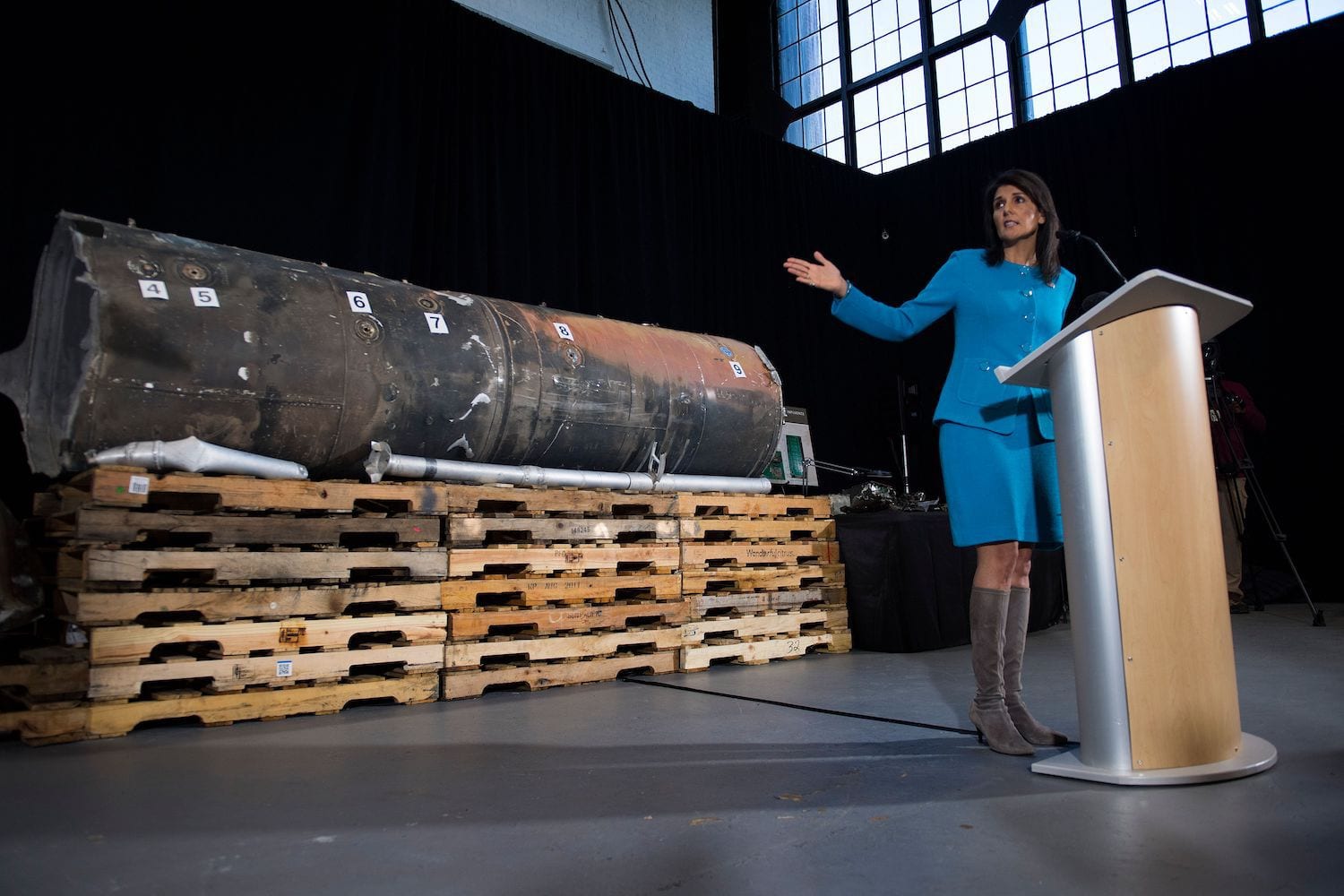
Haley, along with many Israeli officials, continues to push the U.N. to take a harder line against Hezbollah. In this, she has met with opposition from within the U.N., especially the U.N. Interim Force in Lebanon (UNIFIL). UNIFIL is a 10,500 strong force of peace keepers which have been deployed in Lebanon since 1978.
UNIFIL flatly denies Haley’s claim that a “massive” amount of arms are flowing through Lebanon, with the commander of the force stating that there is no evidence of weapon stockpiles in the south. Haley is seeking to change UNIFIL’s mandate to make it more combative toward Hezbollah. The most vocal opponent of this policy in the security council is France, which argues that changes could destabilize Lebanon. Hezbollah refutes UNIFIL’s claims.
“Lebanon has a nuclear bomb … this is no exaggeration,” said Hezbollah Secretary General Hassan Nasrallah, who was actually joking in a televised address. “We don’t really have a nuclear bomb,” he said bursting into a chuckle, and went on to clarify his threat. In fact he was boasting that Lebanon had the missile strike capacity to target an ammonia storage facility in Haifa and the ensuing cloud of toxic gas could kill several thousand. He went on to take credit for the “missiles of the resistance cover[ing] each and every spot in occupied Palestine.”
This boast reflects the addition of precision-guided armements possessed by Hezbollah.
The Israelis have moved aggressively to counter the flow of weapons into Lebanon, launching hundreds of air strikes to stop arms crossing over from Syria. However, there are credible suspicions that Iranian commercial airlines are continuing to smuggle arms, because of irregular flights between Tehran, Damascus, and Beirut. However, Israel’s biggest fear is that the final defeat of ISIS will open up a direct land-based smuggling route directly between Iran and Lebanon.
However, Hezbollah is not the only force in Lebanon facing accusations of arms trafficking.
One of the most significant sources of arms for Lebanon has been the Donas contract, a tripartite agreement between Saudi Arabia, Lebanon and France. The agreement is meant to modernize the Lebanese military with French weapons financed by Saudi Arabia.
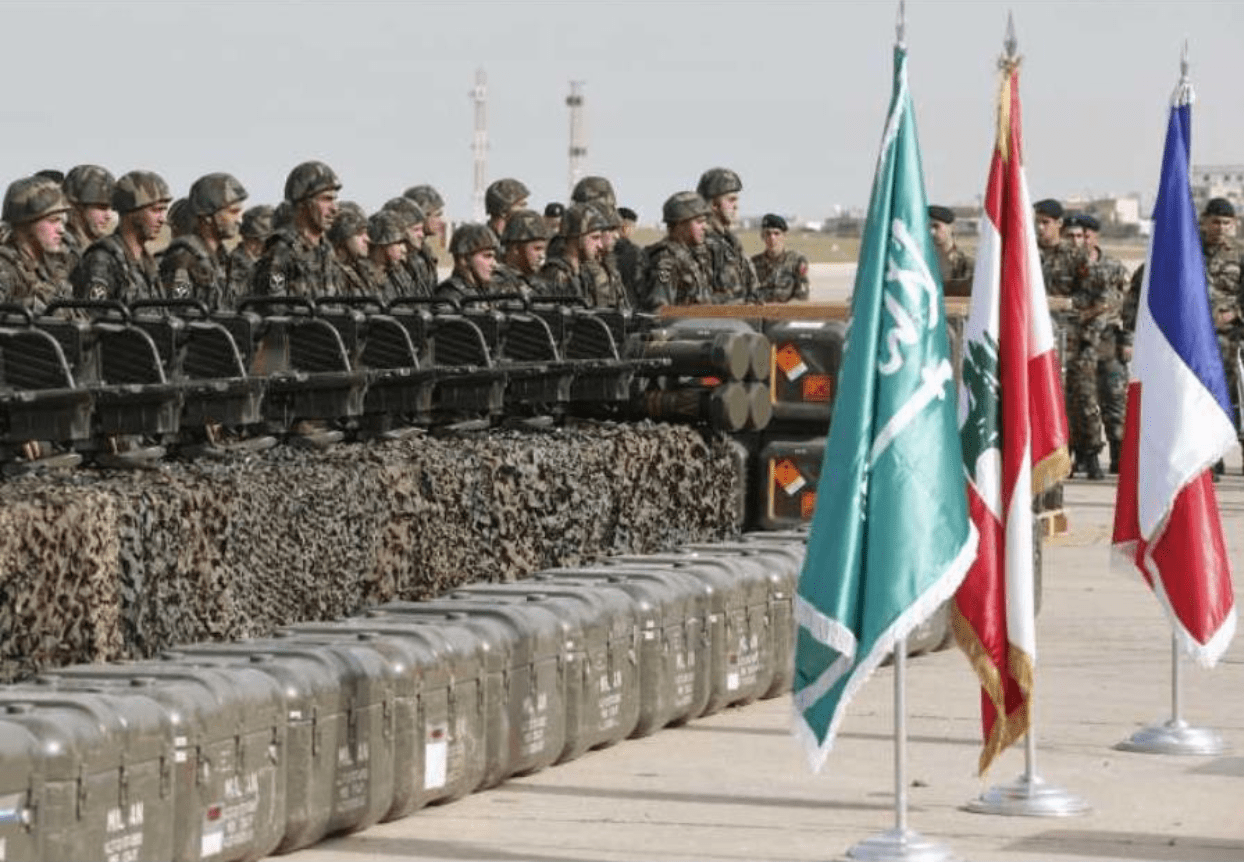
However, the actual destination of the gear is questionable. According to leaks to La Federación Internacional de Derechos Humanos, Observatoire Des Armements, and to French media outlets, when French contractors received environmental specifications for the weapons (for optimal functionality of military equipment, custom adaptations to regional conditions are necessary), they noticed something odd.
“In 2015 we began testing the material planned for Donas. To our surprise we had to adapt the material to conditions which did not tally with those that prevail in Lebanon. That was when the penny dropped. We were working on equipment that was meant to serve in Yemen,” an anonymous source said. “[By April of 2017] 80% of the park of weaponry meant for Beirut was actually the object of a firm order from Saudi Arabia for its own troops and 95% had already been deployed in the field, for testing purposes or permanently.”
[Title Image: Supporters of Hezbollah marching and displaying a missile. (Hezbollah Image)]
Diego Lynch, LIMA CHARLIE NEWS
Lima Charlie provides global news, featuring insight & analysis by military veterans and service members Worldwide.
For up-to-date news, please follow us on twitter at @LimaCharlieNews
In case you missed it:

](https://limacharlienews.com/wp-content/uploads/2018/09/Hezbollah-Vehicles-Weapon-Transport.jpg)
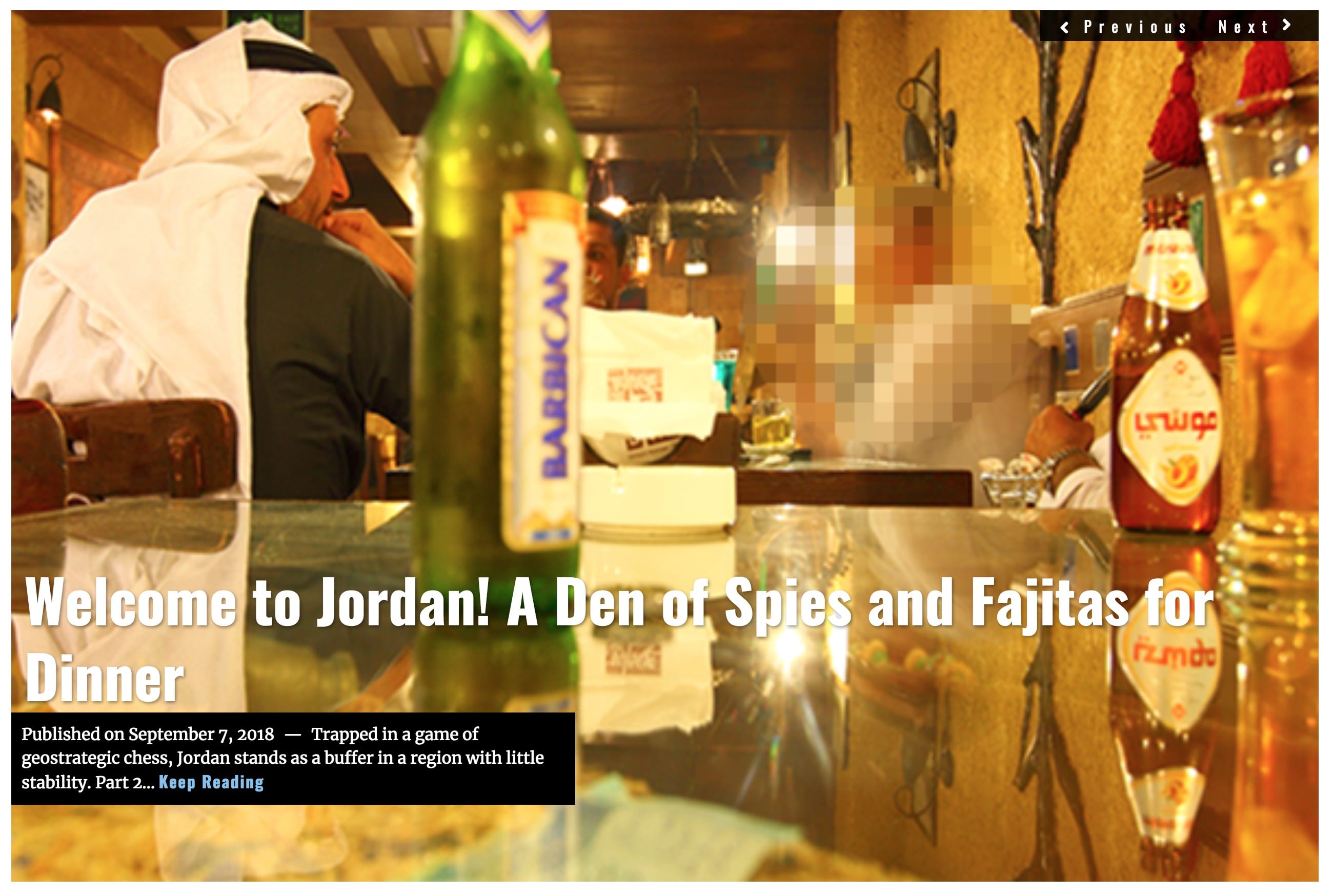

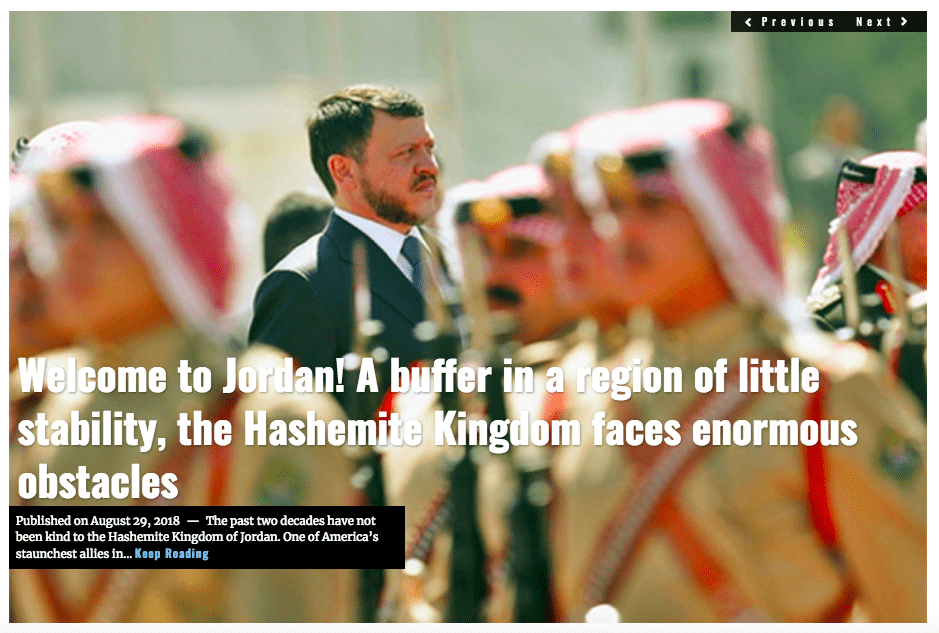
![Syria’s oil, gas and water - the Immiscible Solution to the War in Syria [Lima Charlie News][Photo: ANDREE KAISER / MCT]](https://limacharlienews.com/wp-content/uploads/2019/05/Syria’s-oil-gas-and-water-480x384.png)
![STRATEGIC OPTION | Syrian Endgame - The Hard Truth [Lima Charlie News][Photo: Bulent Kilic]](https://limacharlienews.com/wp-content/uploads/2019/05/STRATEGIC-OPTION-Syrian-Endgame-e1558501175322-480x384.png)
![Image How the Daraa Offensive will change America's presence in Syria [Lima Charlie News]](https://limacharlienews.com/wp-content/uploads/2018/07/How-the-Daraa-Offensive-will-change-Americas-presence-in-Syria-1-480x384.png)

![Africa’s Elections | In Malawi, food, land, corruption dominate [Lima Charlie News]](https://limacharlienews.com/wp-content/uploads/2019/06/Malawi-election-Food-land-corruption-480x384.jpg)
![Image What’s ailing South Korea? [Lima Charlie News]](https://limacharlienews.com/wp-content/uploads/2019/01/What’s-ailing-South-Korea-Lima-Charlie-News-480x384.png)
![Image Fed announcement triggers best trading session in over eight months [Lima Charlie News]](https://limacharlienews.com/wp-content/uploads/2018/11/Jerome-Powell-Reuters-480x384.jpg)
![image Resistance mounts against China's President Xi Jinping [Lima Charlie News][Photo: Johannes Eisele / AFP]](https://limacharlienews.com/wp-content/uploads/2018/08/Resistance-mounts-against-Chinas-President-Xi-Jinping-480x384.jpg)
![Syria’s oil, gas and water - the Immiscible Solution to the War in Syria [Lima Charlie News][Photo: ANDREE KAISER / MCT]](https://limacharlienews.com/wp-content/uploads/2019/05/Syria’s-oil-gas-and-water-150x100.png)
![STRATEGIC OPTION | Syrian Endgame - The Hard Truth [Lima Charlie News][Photo: Bulent Kilic]](https://limacharlienews.com/wp-content/uploads/2019/05/STRATEGIC-OPTION-Syrian-Endgame-e1558501175322-150x100.png)